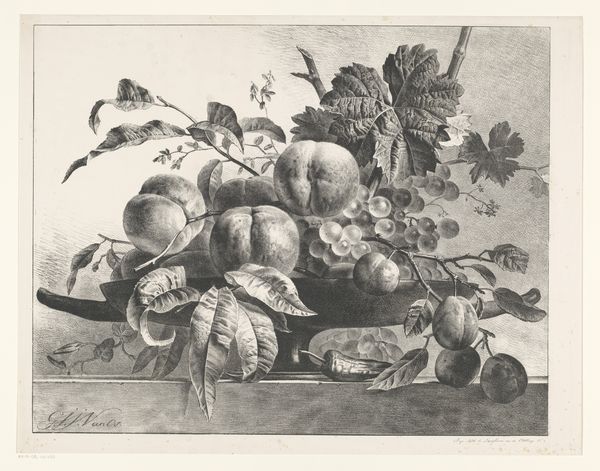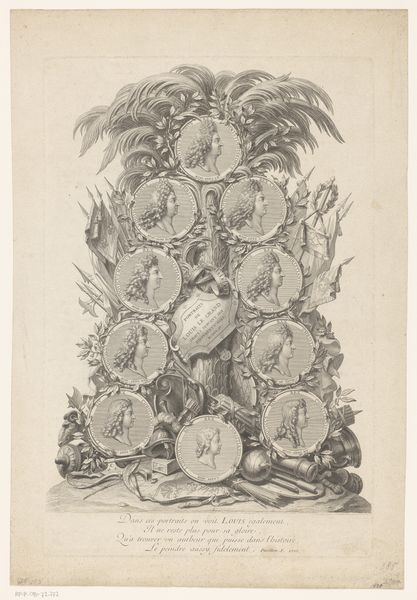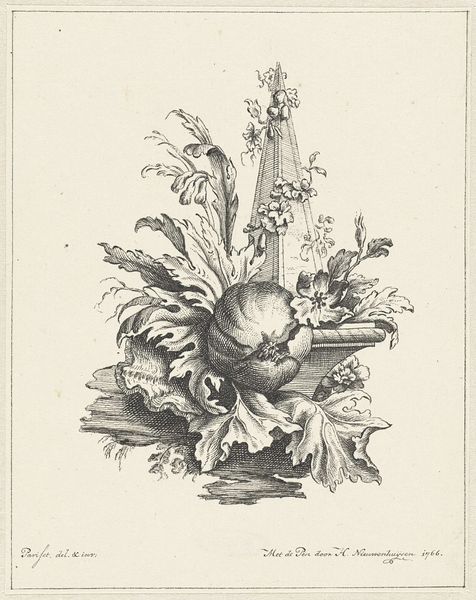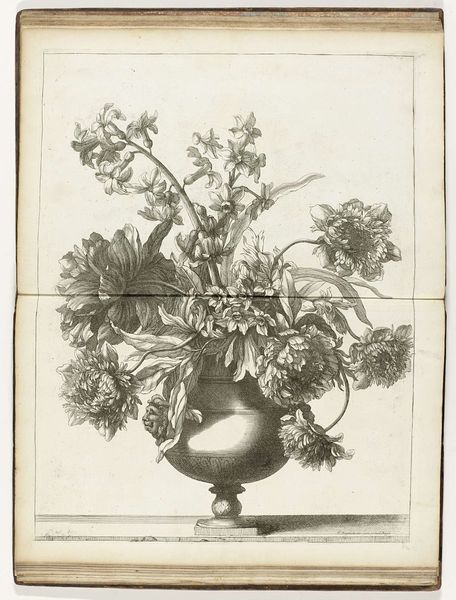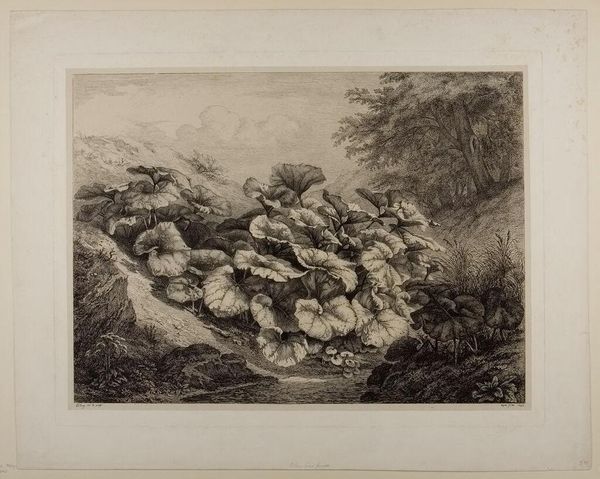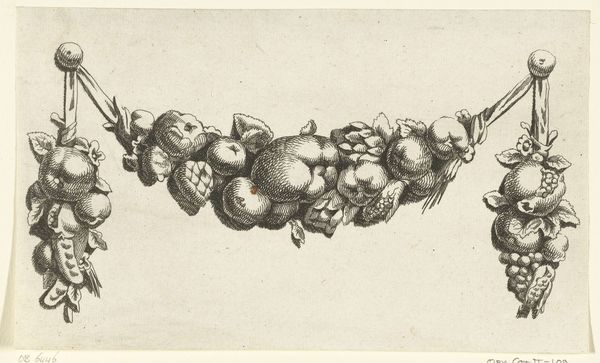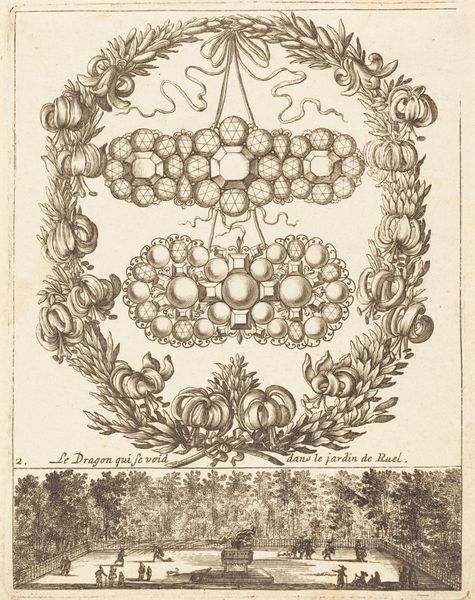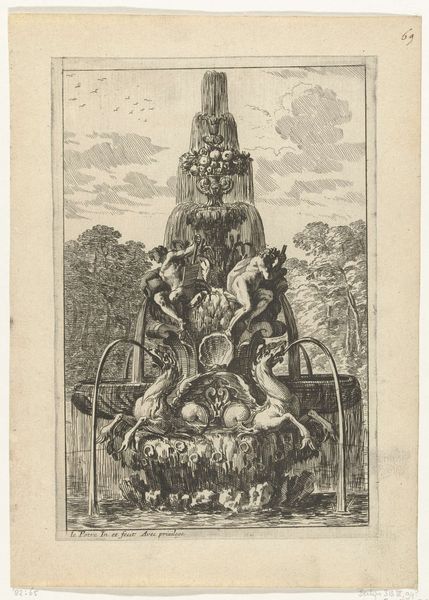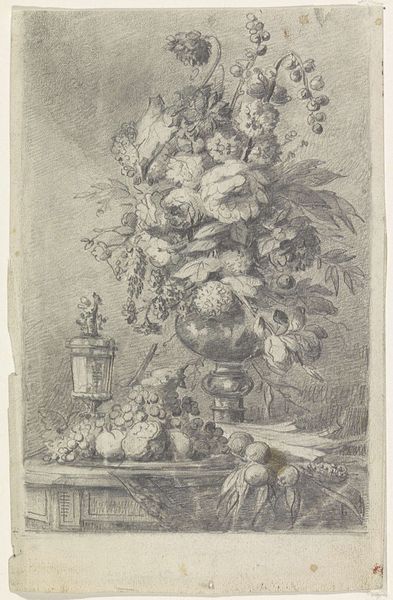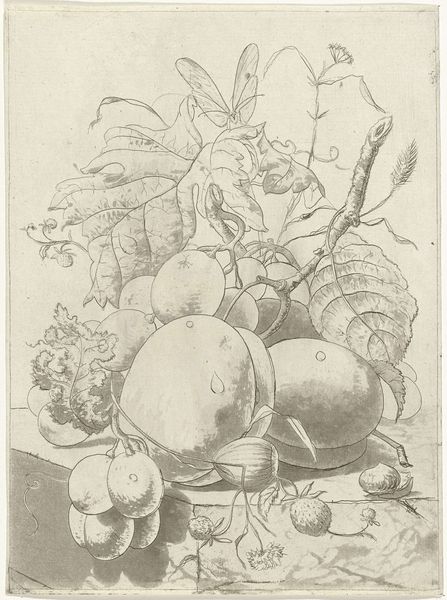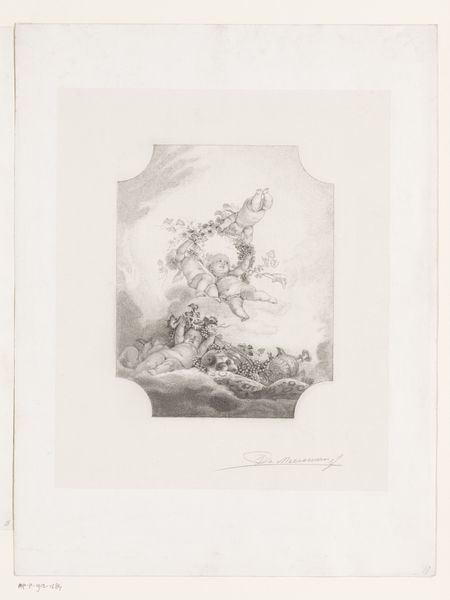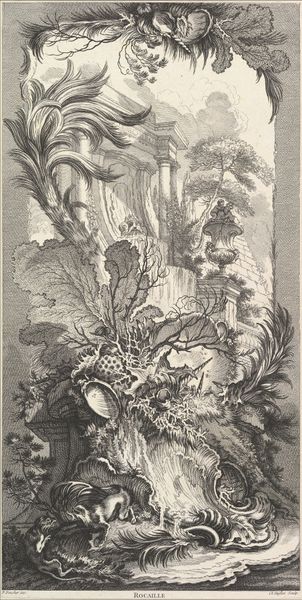
print, etching
#
portrait
#
neoclacissism
# print
#
etching
#
old engraving style
#
etching
#
group-portraits
#
history-painting
#
academic-art
Dimensions: height 560 mm, width 368 mm
Copyright: Rijks Museum: Open Domain
Curator: Here we have "Singers and Songstresses," an etching dating roughly from 1781 to 1843, though the specific artist remains unknown. Editor: What strikes me first is the organization. The artist presents a pyramidal structure, almost like a genealogical chart, filled with portraits within circular frames. A curious landscape hosts them, topped by a radiant lyre. Curator: Precisely! The arrangement of the portraits and the radiating lines from the lyre establish a hierarchy of importance. Each framed portrait acts as a discrete unit, a formal containment of identity within the larger structure. I would note the almost classical balance achieved despite the asymmetry of the mountain. Editor: I see it as a representation of artistic patronage and cultural memory. The pyramid symbolizes an elevation of these musical figures. Who were they, I wonder? The work feels commemorative, celebrating significant figures from a particular social sphere involved in the art of music. Were the social ranks depicted? Curator: Potentially. However, aesthetically, it seems more focused on idealized forms, drawing heavily from Neoclassical conventions: clear lines, restrained emotion in the faces, and an emphasis on order and balance, even if it's an asymmetrical arrangement. The use of monochrome etching flattens individual features into an almost bas-relief effect. Note how the etched lines create subtle tonal variations to distinguish each form and shape. Editor: It prompts me to consider the role of music and musicians in 18th-century society. The artist isn't merely creating an aesthetically pleasing image; they're participating in constructing and solidifying a particular cultural narrative around the importance of music and those who create it. What were the stories behind each of these faces, these singers immortalized here? What roles did social class and access to patronage play? Curator: Agreed. It presents intriguing intersections of form and socio-cultural values. Editor: This piece makes me want to research these figures, to give voice to the voiceless, while you offer an intricate breakdown of its composition, revealing intentional order that I initially glanced over.
Comments
No comments
Be the first to comment and join the conversation on the ultimate creative platform.
